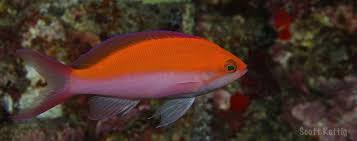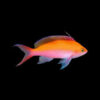Dragons and Their Connection to Time-Controlling Deities

Dragons have held an enduring place in mythology and cultural symbolism across the world. From the fearsome and wise creatures of Western folklore to the revered and majestic serpents of Eastern traditions, dragons are often depicted as powerful beings that transcend the ordinary. One fascinating aspect of dragon mythology is their association with time and deities that govern this elusive and abstract concept. In many cultures, dragons are seen as guardians, symbols, or manifestations of time itself, or they are linked to gods and goddesses who control the flow of time. This article explores the profound connection between dragons and time-controlling deities across different mythologies, cultures, and philosophies, highlighting how these powerful beings embody the cyclical nature of existence, creation, and destruction.
Dragons as Symbols of Time and Eternity
In various mythologies, dragons symbolize more than just physical strength or elemental forces. They are often tied to the concept of time, embodying eternity and the cyclical nature of existence. Their ancient and timeless nature suggests that they are creatures that exist beyond the constraints of mortal time, and thus, they are seen as embodiments of the past, present, and future.
In Chinese mythology, for example, dragons are closely linked to the passage of time, with the dragon being seen as a creature of great longevity, an eternal being that is both powerful and wise. The Chinese dragon is also associated with the celestial calendar, which was divided into twelve cycles that represent different months and seasons. Each cycle is governed by a specific animal from the Chinese zodiac, and the dragon stands as a symbol of power and fortune within this system. The cyclical nature of time in Chinese cosmology is directly linked to the presence of the dragon, as it is a symbol of constant change and evolution, reminding people of the natural rhythms of the universe.
The dragon’s ability to live across multiple generations and its connection to heavenly realms make it a timeless figure in many cultures, embodying both the infinite passage of time and the potential for eternal rebirth and renewal. This timeless aspect of the dragon provides a bridge between the realms of mortals and gods, underscoring the creature’s role as a gatekeeper or intermediary between different dimensions, including that of time itself.
The Dragon and the Gods of Time: Greek and Roman Mythology
In Greek and Roman mythology, dragons are often associated with powerful deities who govern time, fate, and the natural order. These gods and goddesses, such as Chronos, the personification of time in Greek mythology, or Saturn in Roman lore, have an intrinsic connection to dragons, which are seen as guardians or keepers of the divine cycles of life and death.
Chronos, the god of time in Greek mythology, is depicted as an ancient, often fearful figure who controls the flow of time. While not explicitly portrayed as a dragon, Chronos is often connected to serpentine imagery, reflecting the intertwining of the divine and the natural world. The serpentine form of Chronos reflects the idea of time as an endless, cyclical force, constantly moving forward yet simultaneously looping back on itself. The dragon’s form is similarly serpentine, with its long, winding body symbolizing the endless passage of time. The connection between dragons and Chronos reinforces the idea of dragons as symbols of eternal time, representing the boundless and ever-flowing nature of time itself.
In Roman mythology, Saturn (Cronus in Greek mythology) is the god of time, agriculture, and renewal. Saturn is often depicted in association with a serpent or dragon, representing the cyclical nature of the seasons and the passage of time. The imagery of the dragon as a symbol of both destruction and regeneration aligns with Saturn’s role as a god who governs both the end of cycles and the beginnings of new ones. In these mythologies, dragons serve as messengers or manifestations of the gods of time, reinforcing the theme of time as both a creative and destructive force.
The Role of Dragons in the Asian Mythological Landscape: The Chinese Dragon and Time
In Chinese culture, dragons play a particularly important role in the understanding of time and the universe. The Chinese dragon is not just a creature of myth but a symbol of cosmic forces that govern both the heavens and the earth. Dragons in Chinese tradition are often associated with celestial beings, gods, and immortality. The concept of time in Chinese philosophy is cyclical, and dragons are often seen as mediators between the different periods of time, including the past, present, and future.
One of the most famous time-related aspects of the Chinese dragon is its connection to the Chinese zodiac. The dragon represents one of the twelve animals in the zodiac, which governs the flow of time over a twelve-year cycle. Each year is associated with a specific animal, and the year of the dragon is particularly significant as it is associated with power, vitality, and good fortune. This cycle reflects the natural flow of time in Chinese thought, where time is seen not as linear, but as an ongoing series of cycles. The dragon, as a symbol of time, governs this cyclical nature, ensuring the constant renewal of life, fortune, and prosperity.
Furthermore, dragons in Chinese mythology are believed to be able to travel through the heavens, influencing both the seasons and the tides. The connection between the dragon and time is reinforced by its role in controlling the weather, which in turn affects the crops and the flow of seasons. The dragon is not only a symbol of strength and power but also a creature that ensures the continuity and flow of time, keeping the natural order intact.
The Dragon as a Gatekeeper to Other Realms of Time: The Norse World
In Norse mythology, dragons are often depicted as powerful creatures that guard ancient treasures or gateways to other realms. One of the most famous dragons in Norse mythology is Fafnir, who hoards treasure in a cave, guarding it against intruders. Fafnir’s treasure is often seen as symbolic of ancient knowledge and wisdom, including knowledge of time and the cycles of nature. Fafnir’s transformation from a man into a dragon symbolizes the corruption of time, as he becomes consumed by greed and his desire for immortality.
The Norse view of time is deeply tied to the concept of fate, with the Norns—three goddesses who govern the past, present, and future—representing the inexorable passage of time. While dragons are not directly linked to the Norns, they are often seen as creatures that stand between the realms of gods and mortals, symbolizing the boundary between time itself and the unknown. In this context, the dragon is both a protector of ancient wisdom and a reminder of the inevitable nature of time and fate.
The Dragon and Time in Other Global Mythologies
In addition to the Greek, Roman, Chinese, and Norse traditions, dragons are also present in the mythologies of many other cultures, often in association with the theme of time. For instance, in Hindu mythology, dragons or serpentine creatures like the Naga are believed to possess great wisdom and knowledge of the cosmos, including the passage of time. The Naga, often associated with the deity Vishnu, plays a role in preserving the natural order and is linked to both cosmic time and earthly time. The cyclical nature of time is embodied in the serpentine forms of these creatures, whose movements represent the ebb and flow of time across vast cosmic ages.
In Mesoamerican cultures, such as the Aztecs and the Maya, dragons or serpent-like creatures are closely tied to the forces of nature, the heavens, and the passage of time. The feathered serpent Quetzalcoatl, a prominent god in both Aztec and Maya mythology, represents the dual forces of creation and destruction, governing the cycles of time and the seasonal changes that impact agriculture and human life. The serpent’s ability to transcend the earthly realm and enter the heavens connects it to the timeless and eternal nature of the universe.
The Dragon as a Metaphor for Personal Growth and the Passage of Time
Beyond its symbolic role in mythology, the dragon can also be interpreted as a metaphor for personal growth and the passage of time in an individual’s life. Just as time is constantly moving, never pausing, the dragon represents the unstoppable forward march of life, urging individuals to face their own fears and challenges. The dragon’s association with time teaches us that personal growth, like time itself, is a process that requires patience, resilience, and an understanding of both the cyclical and linear nature of our experiences.
Much like the dragon, individuals must learn to navigate the complexities of life and time, understanding that each moment is precious, and the passage of time cannot be halted. Personal transformation, like the mythological dragon’s flight, requires embracing change and learning to adapt to new phases of life. By understanding the cyclical nature of time, we can learn to accept life’s inevitable changes and make the most of the time we have.
Conclusion: The Enduring Connection Between Dragons and Time
The connection between dragons and the deities that control time reflects the profound way in which humans have conceptualized the passage of time and its inevitable effects on life, creation, and destruction. Dragons, as creatures of power and mystery, embody both the cyclical nature of time and its unyielding forward motion. From their role as guardians of time in various mythologies to their symbolic representation of personal growth and transformation, dragons serve as timeless symbols that connect the realms of gods, mortals, and the eternal flow of time.
In cultures across the world, dragons serve not only as mythical creatures but as teachers, guiding us through the complexities of time, fate, and existence. Their presence in mythologies as symbols of power, wisdom, and renewal underscores their importance as both protectors and messengers, reminding us of the ever-flowing nature of time and our place within its endless cycle. By understanding the role of dragons in these traditions, we gain insight into the deeper, more profound ways in which time governs our lives and the universe itself.


